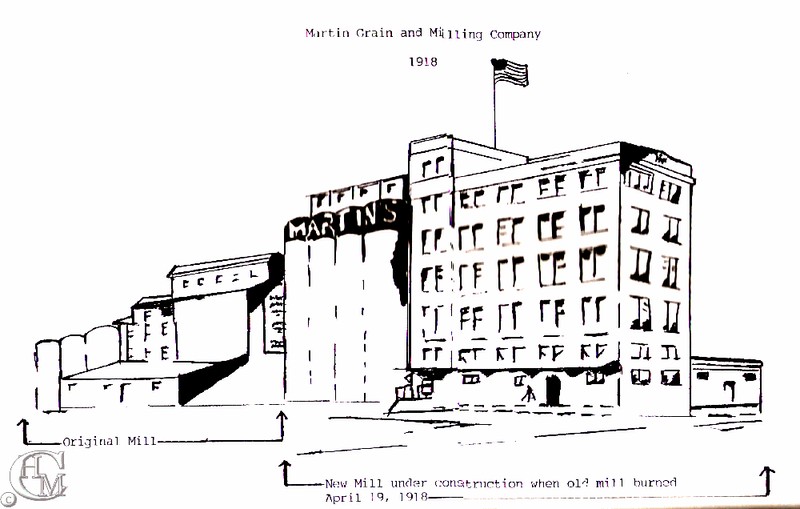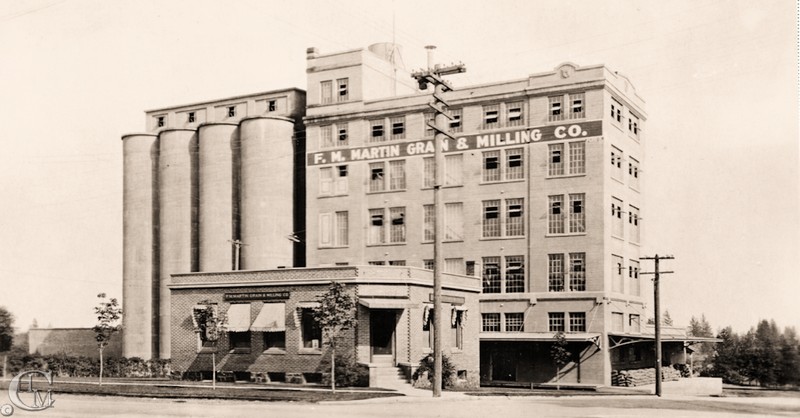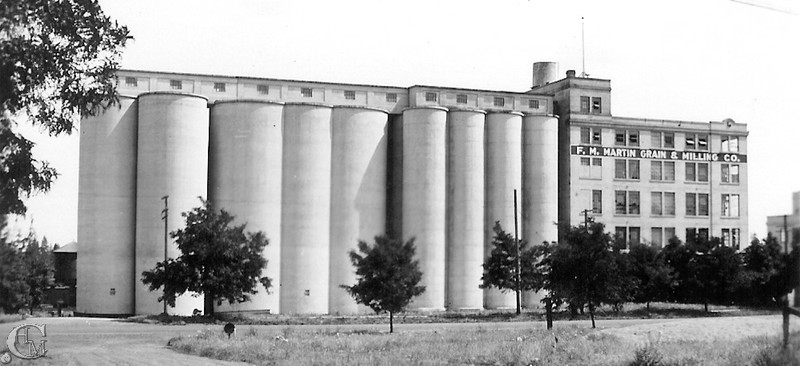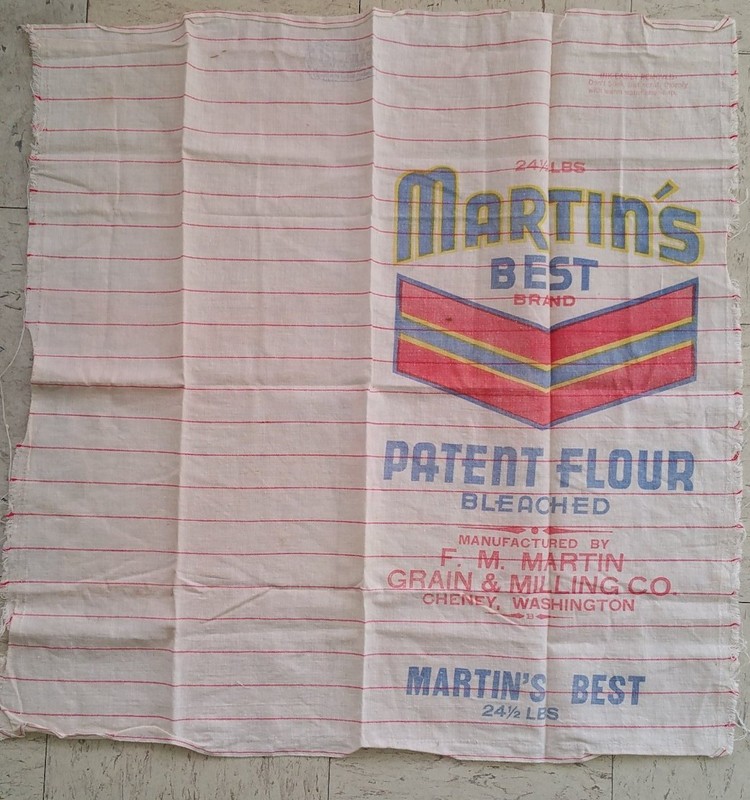F.M. Martin Grain & Milling Company
Introduction
Text-to-speech Audio
Images
The original wooden mill appears at far right in this 1914 image.

Sketch of the original mill at left and the new 1918 concrete mill courtesy of Susan L. Ferguson.

F.M.Martin Grain & Milling Company about 1922.

The expanded mill about 1935

Martin milling, like many mills, bagged flour in sacks with patterns and wash-off labels that could be turned into clothing.

Backstory and Context
Text-to-speech Audio
In anticipation of a reliable source of electricity coming with the Cheney Branch of the Washington Water Power electric railway in 1907, Frank M. Martin built his new flouring mill between the substation and the railroad tracks. Cheney already had a private electric company that had been in operation since the 1890s, but it was plagued with management problems and did not operate after midnight. Martin needed a stable source of electricity to run the motors for his mill.
The F.M Martin Grain & Milling Company was founded in August 1907. The wooden structure was east of the current building, about where the last set of silos are today. Wooden buildings, wheat, and flour can be a dangerous mix as was demonstrated when a fire in 1912 caused over $20,000 in damage. But the company recovered and by 1916 paid substantial dividends to its stockholders, the majority being Frank Martin and son, Clarence.
The original wooden mill structure burned to the ground in a spectacular fire in 1918 while the concrete and brick mill just to its west was under construction.
With the new mill structure, the company not only had the capacity to store large amounts of grain, but also to mill it into wheat at the same location. The nearby Northern Pacific Railroad tracks facilitated this operation. Harvested grain could be brought to the storage elevators by train, milled into flour, and then shipped to clients. A 1919 news story declared that the company, back in operation after the fire, was operating at a daily capacity of 800 barrels a day.
At the west end of the large mill complex is the 1918 construction. On two sides of the tower, facing northwest and southeast, are molded concrete shields enclosing the capital letter M for Martin. The buildings of this complex contain milling equipment and flour moving equipment such as augers and bucket elevators. Larger concrete elevators were built in 1922 and 1923. There were more additions to the complex in 1933 and 1954.
The Martin family sold the mill to Nabisco in 1943. The business was subsequently operated by several companies, including Ralston-Purina, Centennial Mills and, the present, ADM Milling Company.
Sources
Cheney Free Press
WSU Archives, Clarence D. Martin Collection
Ferguson, Susan L.; Defense Against Fire; 1993; self-published
